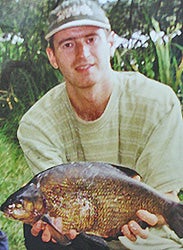| Big reservoirs often mean big bream, but can also present a big challenge.
If the bream in your local reservoir don’t surrender themselves easily, a change of approach could be necessary to enjoy success. I can say with some certainty that large weights of bream have provided some of my most memorable and enjoyable moments in fishing. But be warned, bream can also drive you mad! My local water has changed dramatically over the past couple of decades. Gone are the days of 80 peg matches with daytime bream weights being commonplace. These days it’s probable that you’ll have the full 56 acres to yourself. The reservoir is largely shallow with a maximum depth of 24 feet in one area on the long dam wall, with shallow water to the field side. It’s suffered relentless cormorant pressure which has caused a huge change in the fish stocks. The once abundant small roach and skimmers have become a rarity. For 4 or 5 years I never saw a roach, but they are starting to show again now. I haven’t caught a skimmer for over 7 years. The bream have grown bigger and now average around 5.5 to 6lb from a previously modest 3lb, but are fewer in number. Good numbers of big perch to 2lb show up at times, but the place couldn’t be more different from the ‘bite a cast’ water that it once was. It’s probably not an un-common story for a water that offers such ideal feeding grounds for cormorants. My approach is to night fish, but only after pre-baiting. It’s a method that has served me well over the years and is the only consistent way of targeting the bream . I will be fishing the shallow field side in an area that has 11 feet of water at about 45 yards. The area I have chosen was always a productive spot in the good old days and is home to a large bed of swan mussels. Just as important for me, it’s a comfortable, safe banking to night fish. Swim selection is probably the most important part of the whole process. There are parts of the reservoir that are very shallow and weedy and have never been areas that have produced bream, whilst others have only done so at certain times of the year. 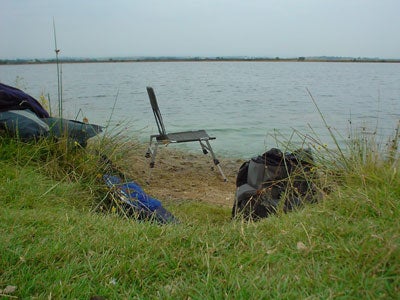  Despite knowing the water for many years, I still glean valuable information from non-angling sources. With so few anglers about, I utilise others that are on the water, often two or three times a day, every day of the year…dog walkers. One in particular is always an encyclopaedia of information, from sighting fish in areas at different times of the day to knowing where they tend to shoal during different weather conditions. Every time I bump into him, it’s always 10 minutes well spent. During the evenings prior to fishing, I mix 40 balls, which are catapulted into the swim. I will do this for a minimum of 2 evenings, preferably more. 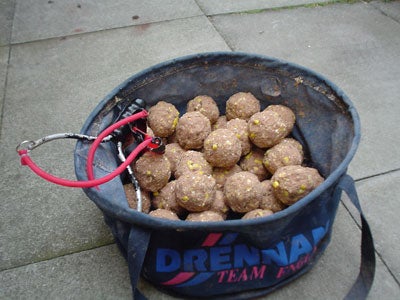  The mix is basic, being a combination of 50% brown crumb and 50% soaked flaked maize. I add to this a good helping of 6mm pellets, sweet corn and any frozen left-overs from previous sessions, such as hemp or pearl barley. I don’t bother with flavoured ground baits, as I am not competing with anyone and I know the area is patrolled at night by the bream on regular basis. 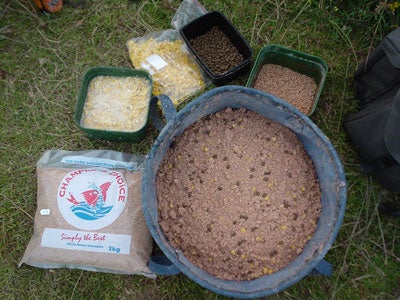  So why pre-bait? Well, I am not only looking to attract them into the area, I want to change their feeding habits. They wouldn’t naturally stay in this one area for the whole night. It might be one of several areas they would visit. By providing them with a 5 course meal, I am hoping that over a period of days, they will become accustomed to knowing that this is the only area worth visiting at meal times and they will feed confidently there. I always pre-bait at the same time of day, which is during the final half hour of light and this will coincide with the time I will feed before fishing. I want to avoid running the risk of allowing any roach and perch to make a dent in it, before dark. Neither species have ever fed at night, so I know it will be safe if I introduce it at dusk. The weather leading up to my first session is not ideal. The past 10 days have been very hot, warm with little wind. Previous attempts in such conditions have not been successful. I am fishing my favoured swing-tip method with a fixed paternoster rig and an open end, extra large Nisa feeder. A size 12 hook is used in conjunction with treble red maggot or corn hook bait. Once they are feeding hard, corn outscores any other bait on this water. I arrive Saturday evening and fish from dusk until 1am, but I blank! The bream twice show up in front of me, but on each occasion they move as quickly as they appeared. I decide to continue the pre-baiting throughout the coming week in the hope that conditions improve for the following weekend. I manage 3 further pre-baiting sessions and return the following Saturday evening. The weather has remained warm and dry, but with less sunshine. There’s a nice breeze on the water, which remains all night, but on the down side, there’s a full moon. I again set a deadline of 1am. If there are no signs of encouragement by then, I’ll call it a night. Past experience has taught me that if haven’t had any success by this time, I am destined to blank. 40 balls are introduced at 9pm and I am fishing for 9.45pm. I’d normally be expecting some sign of activity with an hour or so of dark, but the session gets off to a slow start. With the surface ripple, it’s difficult to sight any rolling fish and a pair of grebes’ dive repeatedly in my swim. It’s 11.45pm before I get a couple of liners. This is soon followed by a couple of shy bites, but during these early stages, I won’t strike at anything other than a confident take. This early period is a critical one, where mistakes are costly. If I bump a fish now, the night could be over, so I sit on my hands, but nothing further develops. By 12.30am, I find myself debating if I should reel in, bite off the feeder and sulk off to bed. I’ve slid so low in my chair; I’m in danger of winding up in the mushy clay at my feet. My optimism has faded, the sandwich’s were devoured sometime back and the flask is almost empty. However, I tell myself that I’ve had nights in the past where it’s been late before I’ve caught and I that I should stick to my 1am plan. At 12.40am, out of the blue, I get a bite that I can’t possibly miss. I land a bream of about 4.5lb. The smallest I’ve had from here for a few years. 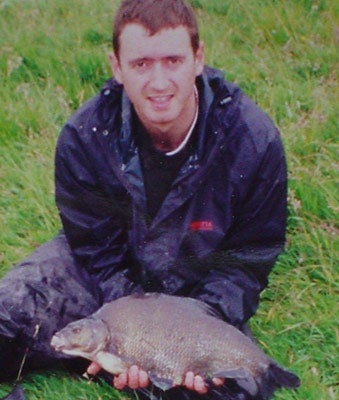  It’s amazing how one fish can totally change your perception. Suddenly I’m hyper and hovering over my rod expecting another tear-away bite any second. 20 minutes later and I’m into another fish. This time it’s a proper dog of about 6lb. As the morning ticks by, I continue to pick up more fish, but by previous standards it’s frustratingly slow. They clearly aren’t feeding hard and I catch in short spells. In the moonlight I occasionally catch a glimpse of odd fish rolling further out than where I’m fishing. It’s possible they are drifting in and out, which would explain the pattern of bites. It’s light shortly before 5am and things have really slowed down during the past hour. I’ve managed 11 bream and lost a couple in the clumps of marginal weed. All but 2 are over 5lb and I weigh 2 for a guide, 5lb 12oz and 6lb 1oz.
As I pack up, I can see bream rolling at a range of 120 yards or more, but there’s no sign of them by the time the sun breaks through the cloud. Despite a weight of about 60lb, I leave feeling somewhat unfulfilled. Mainly because I know that 25 to 30 fish is easily achievable, when they are really in the mood. As I head for the car, I contemplate re-elasticating my catapult, restocking my bait supplies and I interrogate my sleep deprived brain about what I have planned for next weekend. You know what? Bream can drive you mad!! Paul Christie |
Welcome!Log into your account










